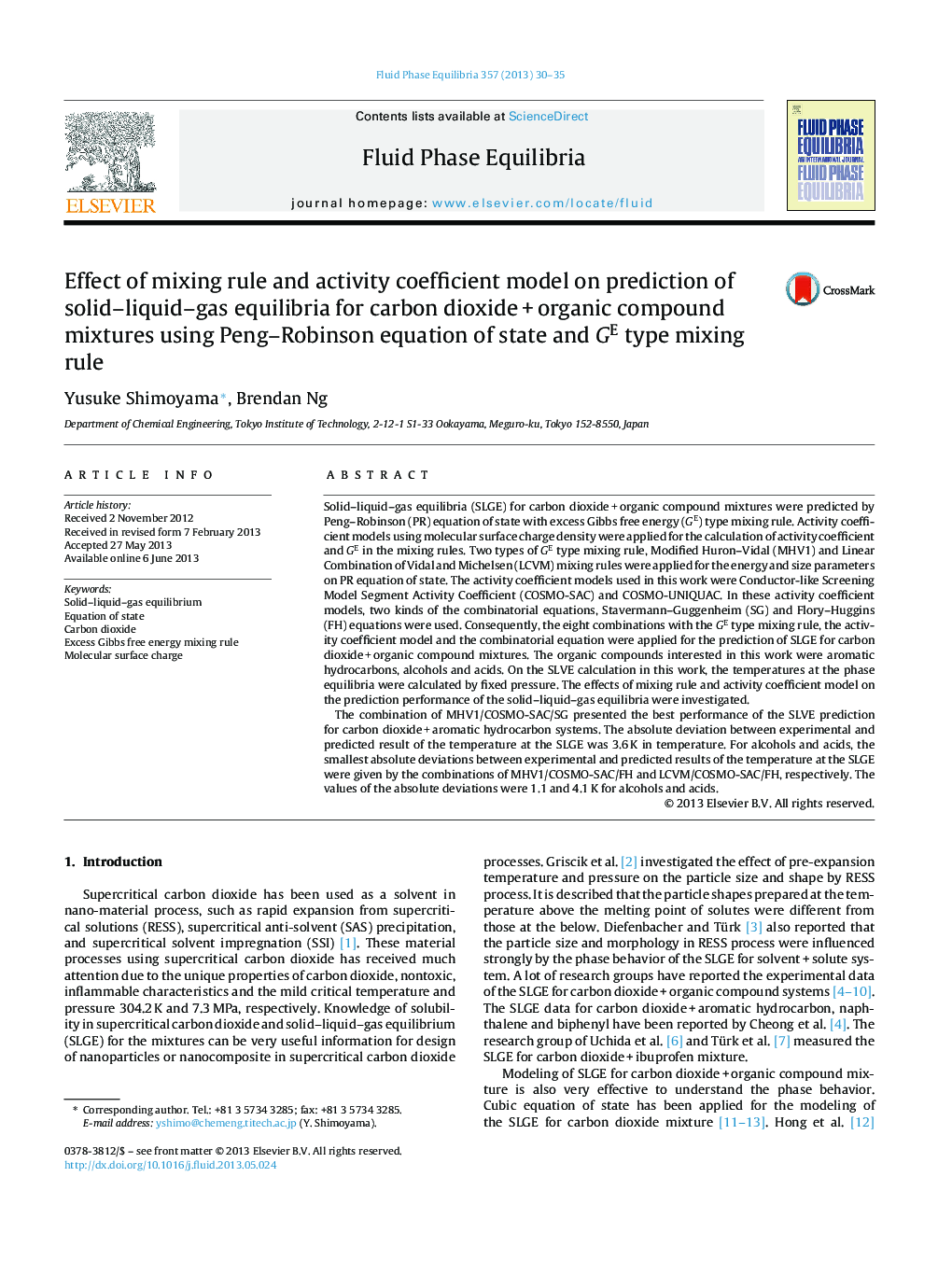| کد مقاله | کد نشریه | سال انتشار | مقاله انگلیسی | نسخه تمام متن |
|---|---|---|---|---|
| 203343 | 460649 | 2013 | 6 صفحه PDF | دانلود رایگان |

Solid–liquid–gas equilibria (SLGE) for carbon dioxide + organic compound mixtures were predicted by Peng–Robinson (PR) equation of state with excess Gibbs free energy (GE) type mixing rule. Activity coefficient models using molecular surface charge density were applied for the calculation of activity coefficient and GE in the mixing rules. Two types of GE type mixing rule, Modified Huron–Vidal (MHV1) and Linear Combination of Vidal and Michelsen (LCVM) mixing rules were applied for the energy and size parameters on PR equation of state. The activity coefficient models used in this work were Conductor-like Screening Model Segment Activity Coefficient (COSMO-SAC) and COSMO-UNIQUAC. In these activity coefficient models, two kinds of the combinatorial equations, Stavermann–Guggenheim (SG) and Flory–Huggins (FH) equations were used. Consequently, the eight combinations with the GE type mixing rule, the activity coefficient model and the combinatorial equation were applied for the prediction of SLGE for carbon dioxide + organic compound mixtures. The organic compounds interested in this work were aromatic hydrocarbons, alcohols and acids. On the SLVE calculation in this work, the temperatures at the phase equilibria were calculated by fixed pressure. The effects of mixing rule and activity coefficient model on the prediction performance of the solid–liquid–gas equilibria were investigated.The combination of MHV1/COSMO-SAC/SG presented the best performance of the SLVE prediction for carbon dioxide + aromatic hydrocarbon systems. The absolute deviation between experimental and predicted result of the temperature at the SLGE was 3.6 K in temperature. For alcohols and acids, the smallest absolute deviations between experimental and predicted results of the temperature at the SLGE were given by the combinations of MHV1/COSMO-SAC/FH and LCVM/COSMO-SAC/FH, respectively. The values of the absolute deviations were 1.1 and 4.1 K for alcohols and acids.
Journal: Fluid Phase Equilibria - Volume 357, 15 November 2013, Pages 30–35